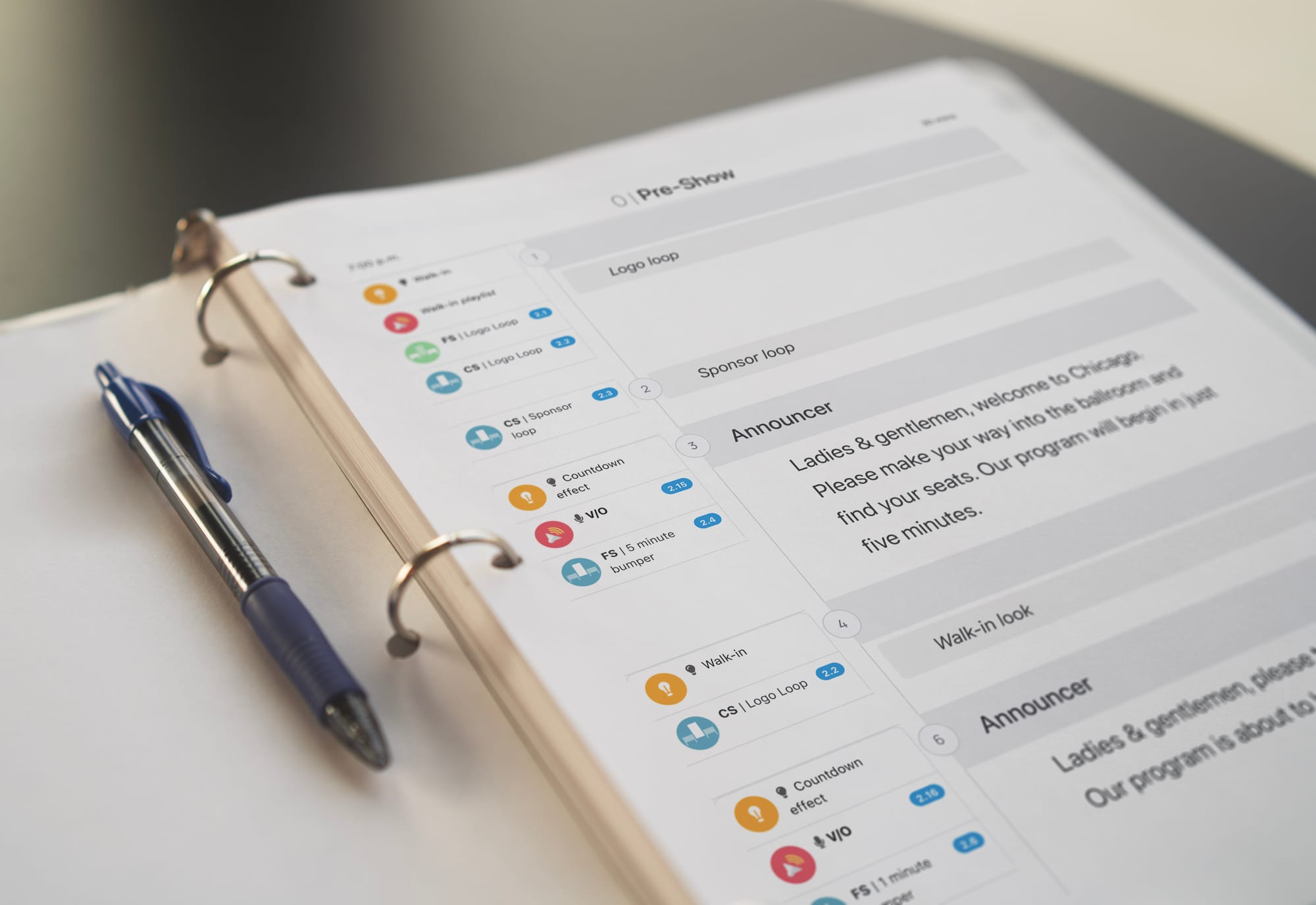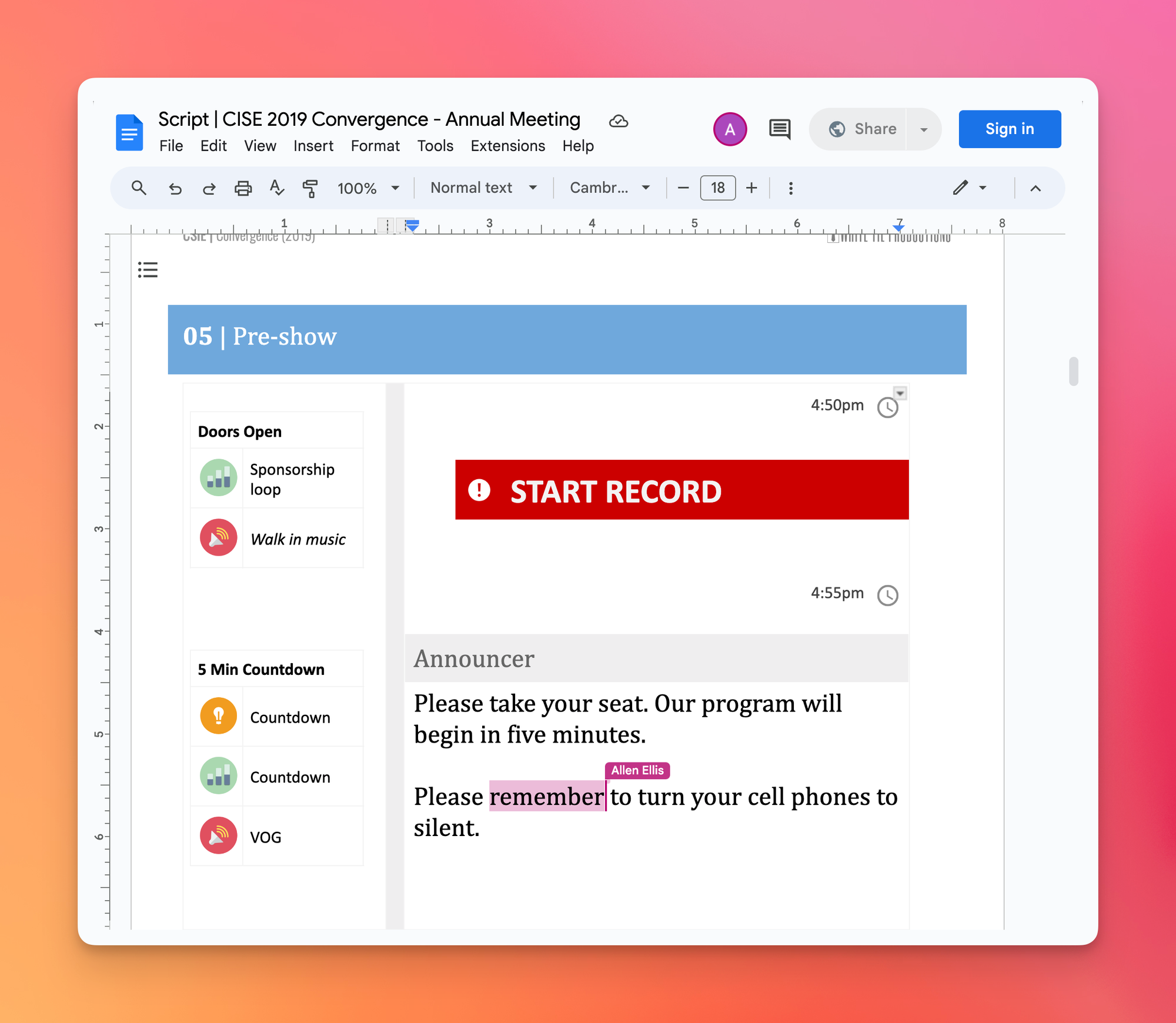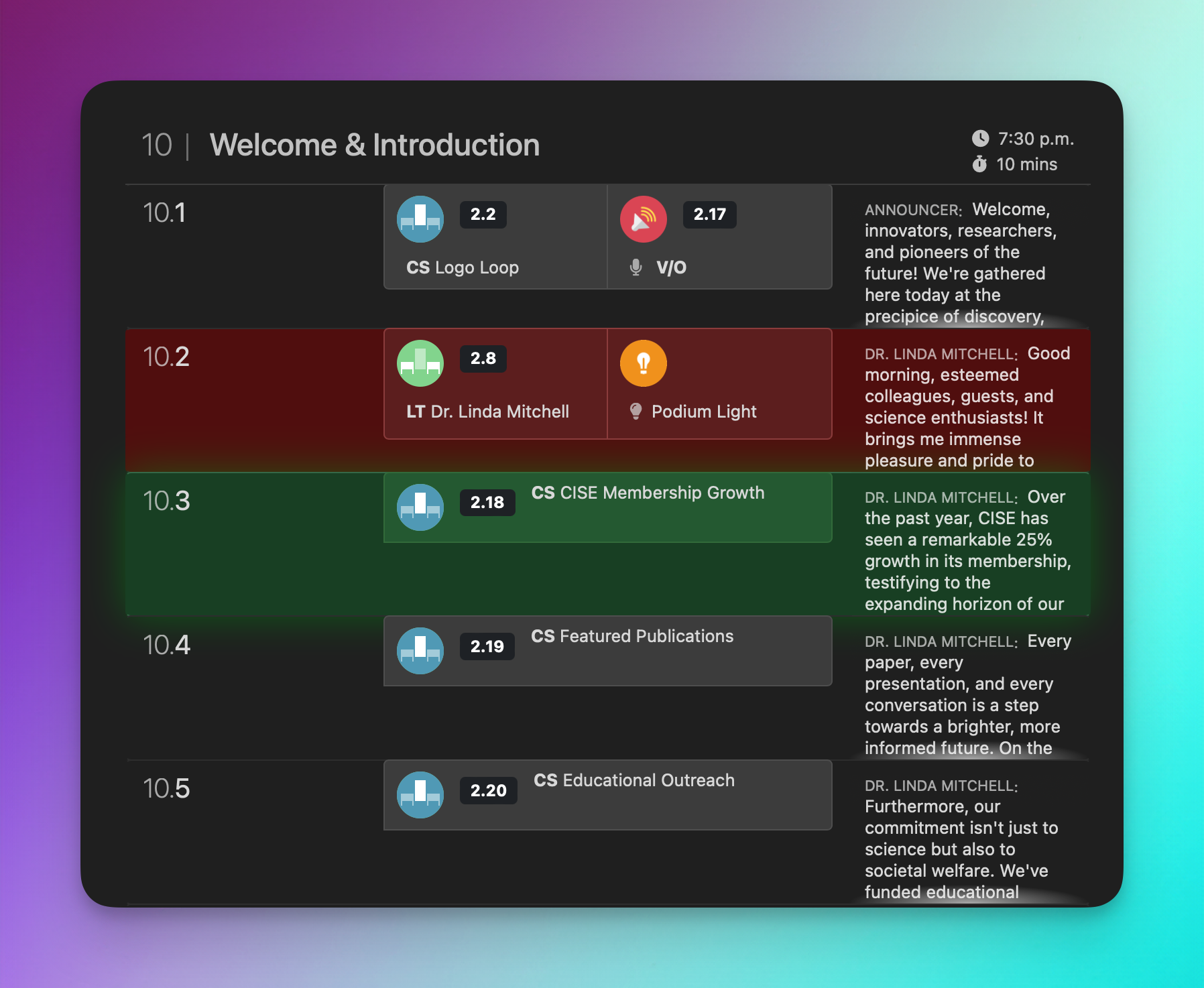The Evolution of Event Scripting

In modern event production, the humble paper script has been the foundation of successful events everywhere. It is reliable, easy to read, and the staple of events past and present.
However, in the last few decades, we’ve seen an exciting shift towards digital documents and real-time platforms that are allowing teams to produce events quicker and more confidently.
Word Processing
Word processing software like Microsoft Word has long ago brought the event production industry into the modern era of digital documents, allowing teams the flexibility to quickly edit & revise documents, and to collaborate on them across the internet.
The biggest barrier with pure digital documents is that they can only be edited by one person at a time. Any editors need to be careful that they are using and then sharing the latest version of the file.
Cloud Documents
Cloud documents like Google Docs and Office 365 revolutionized this workflow by allowing editors anywhere to instantly collaborate on the same document together in real time. This helped ensure that anyone working on the script could see the latest draft at any moment, and to edit it without worrying about overwriting someone else’s changes.

The biggest problem with cloud documents is that these programs have been designed for a wide range of uses, and therefore are not specifically built for script writers. This results in a few major pain points:
- Keeping technical cues in sync with the spoken word part of the script can be difficult, often requiring manually creating & adjusting table rows.
- Complex scripts that span dozens or hundreds of pages can be very slow to load and edit, especially on mobile devices.
- Cloud documents cannot be integrated or synced with any other platforms. This means that creating additional documents, such as run of shows, graphic lists, or cue sheets, requires you to duplicate information. This can make it difficult to keep any changes in sync.
The ideal platform is one that combines the benefits of modern cloud documents, while also embracing functionality for event production teams.
Cloud Platform
Modern event script-writing software like Script Elephant combine the modern conveniences of digital and cloud document tools, such as rich WYSIWYG formatting and printed PDF support, with specific features that script writers depend on to manage large events.

Native cue support
The most important feature of a live script writing software is the ability to easily link a section of spoken word to a technical cue. This means that you can write using the same rich formatting you expect from a word processor, and be able to make updates to that speech as needed, knowing that the cues you’ve entered will remain lined up with exactly the right moment in the speech.
Built to scale
Script Elephant specifically was engineered to load quickly even for the largest productions. There are no artificial limits on the number of cues you can add, and it can load full sessions containing thousands of cues in just a few seconds.
This is essential for long-running broadcasts and awards shows to instantly open scripts containing thousands of unique graphics.
Fully integrated platform
The most important feature of a cloud scripting platform is that it can become a dependable source of truth for your team’s data.
In addition to the full-page script and PDF views, this means your on-site operators can open a condensed run of show view that include just the cues that affect them. A “spoken word” view is also available for podium or teleprompter use. A private guest link is also available that redacts any script content you mark as confidential. Any changes to the original script are automatically reflected in all of these views.

Platforms like Script Elephant also include a robust graphics preparation and review engine. Because it runs as an integrated platform, any updates to the graphics in your show are immediately visible to your creative team and end clients, allowing everyone to respond quickly and proactively to changes.
These modern tools are becoming increasingly prominent across the event production industry because they are helping teams more easily and reliably build best-practice scripts and run of show documents.

